
Crop:Elephant foot yam
Scientific name : (Syn:Elephant foot yam) Amorphophallus paeoniifolius (Syn:A. campanulatus (Roxb.) Blume) (2n = 28)
Common / Local Name : Hindi:Suran, Zamikand. Family: Araceae


Elephant foot yam is a remunerative and profitable stem tuber crop. The crop is gaining popularity due to its shade tolerance, easiness in cultivation, high productivity, less incidence of pests and diseases, steady demand and reasonably good price. Tubers are mainly used as vegetable after thorough cooking. Chips are made of starch-rich tubers. Tender stem and leaves are also used for vegetable purpose. Tubers contain 18.0% starch, 1-5% protein and up to 2 % fat. Leaves contain 2-3 % protein, 3 % carbohydrates and 4-7 % crude fibre. Tubers and leaves are quite acrid due to high content of oxalates. Acridity is usually removed by boiling fairly for a long time. Cultivating of elephant foot yam is limited to India, Philippines, Sri Lanka and South East Asia.
After one or two ploughings, pits of size 60 x 60 x 45 cm are made at a spacing of 90 x 90 cm during February. For harvesting small to medium sized tubers, distance between pits is reduced to 60 x 60 cm. Pits are half filled with top soil and well dried farmyard manure @ 2, 0-2, 5 kg/pit and wood ash.
Amorphophallus is propagated through corm. Corms harvested during November are stored in well ventilated rooms. Before planting during February, the corm is cut into setts of 750-1000 g, each bearing a portin of centeral bud. Cut corms are smeared with cow dung slurry or wood ash and allowed to dry in patial shade. Rapid seed corm production technique suggests use of cormels and mini sett transplants of 100 g size for planting at a closer spacing of 45 x 30 cm.
Planting material is placed vertically in the pit. After compacting the planted tubers, pits are covered with organic mulches like green leaves or paddy straw.

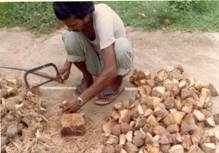
Sree Padma ?Developed at CTCRI, Thiruvananthapuram; yield 42 t/ha
Gagendra ? Developed at Apau, Hyderabad.
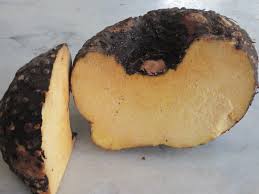
Apply fertilizer @ 40 kg N, 60 kg P205 and 50 kg K20/ha 45 days after planting along with mulching and application of cow dung or compost after receipt of rains. This is followed by digging interspaces and light earthing up. Top dressing is done with 40 kg N, 50 kg K20 again one month after, along with shallow intercultural operations like weeding, light digging and earthing up.
Amorphophallus is mainly grown as a rainfed crop. During periods of late receipt of monsoon, a light irrigation is given during early stages of crop. Crop is susceptible to water stagnation. Mulching immediately after planting is the most important operation in Amorpohophallus. It not only conserves soil moisture and regulates soil temperature, but also suppresses weed growth. A plant usually produces a single”stem?In case of more numbers, it is advisable to remove it retaining only one healthy one.
Amorphophallus is free from major pests and diseases except collar rot caused by Sclerotium rolfsii. Water logging, poor drainage and mechanical injury at the collar region favour disease incidence. Disease can be managed by use of disease-free planting material, removal of infected plants, improving drainage, application of neem cake in soil, use of bio-control agents like Trichoderma and drenching soil with captan 0.2 %.
Amorphophallus Mosaic Disease
Primary spread is through planting material. Secondary spread of the disease is through insect vectors, Myzus persicae Sulz., Aphis gossypii Glover, A. craccivora Koch. and Pentalonia nigronervosa coq.
Disease symptoms include mosaic mottling of leaves and distortion of leaf lamina. Corms produced by the mottled plants are much smaller than those without mottled leaves.
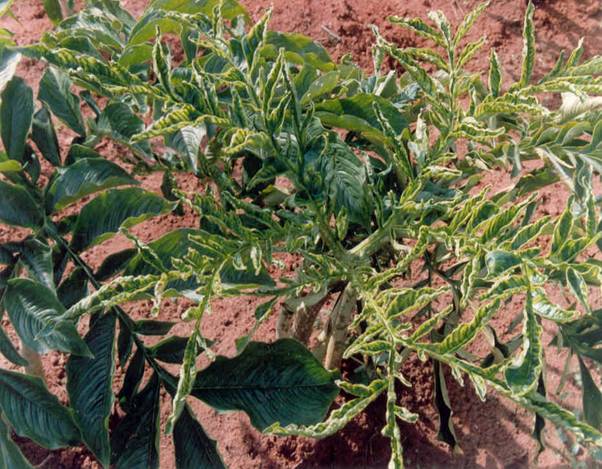
Management: Use of virus free planting material, spraying of systemic insecticides to prevent secondary spread
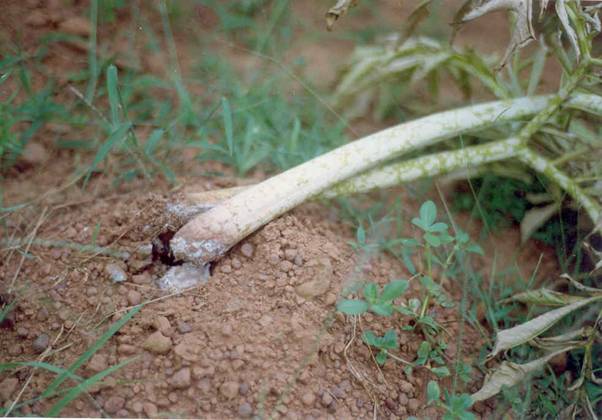
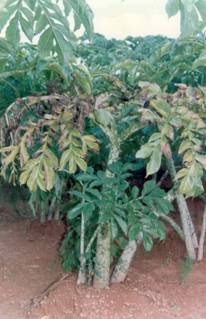
Underground corms are harvested with pick axe or by digging when the top is completely withered and fallen. Crop will be ready for harvest in 8-9 months after planting. However on better market price, tubers can be harvested six months onwards. Average yield is 30-40 t/ha.
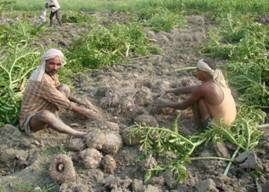
Input availability |
Address/Contact details |
| Seeds |
|
Fertilizers |
|
Pesticides |
|
| Machineries |
|
|